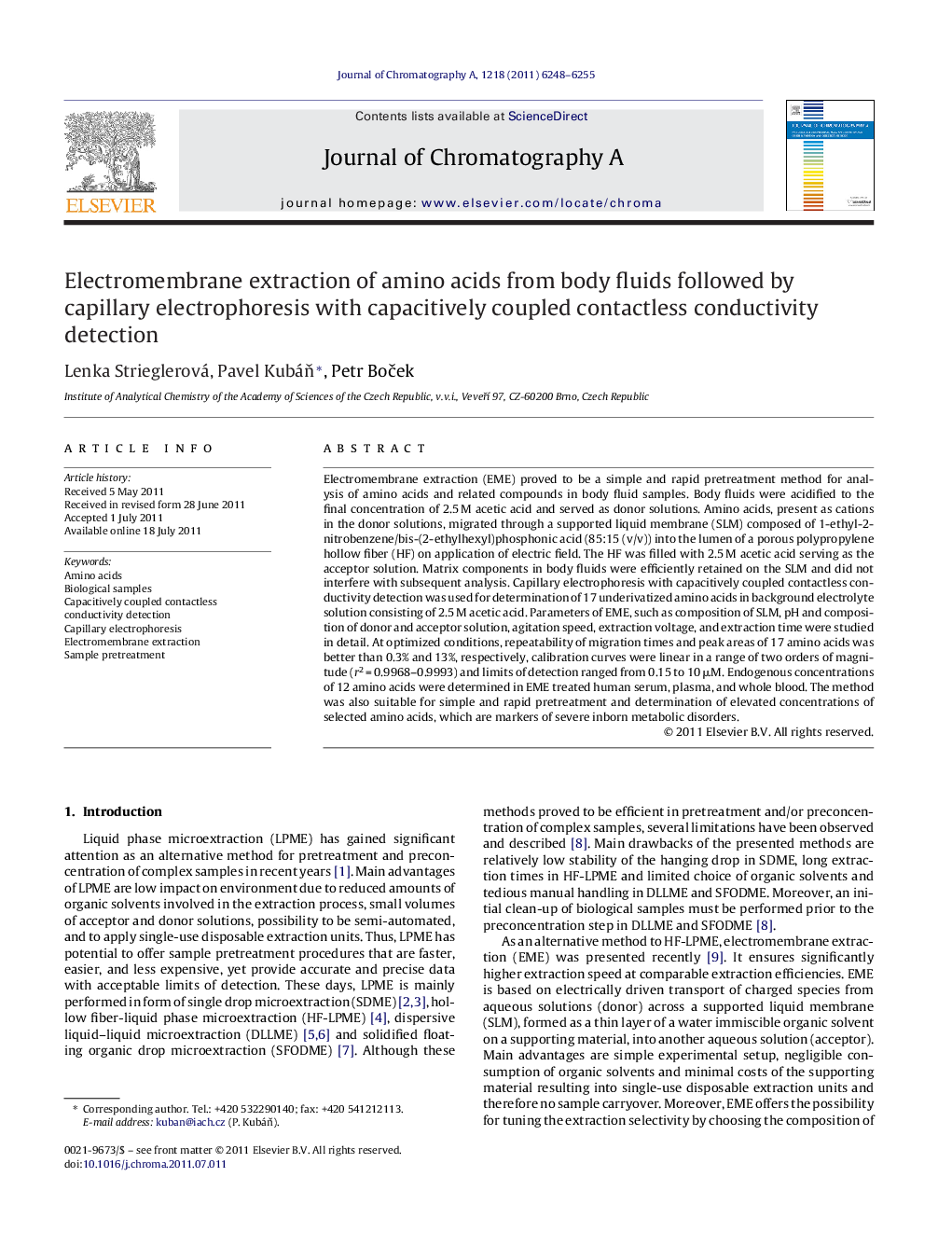| Article ID | Journal | Published Year | Pages | File Type |
|---|---|---|---|---|
| 1202464 | Journal of Chromatography A | 2011 | 8 Pages |
Electromembrane extraction (EME) proved to be a simple and rapid pretreatment method for analysis of amino acids and related compounds in body fluid samples. Body fluids were acidified to the final concentration of 2.5 M acetic acid and served as donor solutions. Amino acids, present as cations in the donor solutions, migrated through a supported liquid membrane (SLM) composed of 1-ethyl-2-nitrobenzene/bis-(2-ethylhexyl)phosphonic acid (85:15 (v/v)) into the lumen of a porous polypropylene hollow fiber (HF) on application of electric field. The HF was filled with 2.5 M acetic acid serving as the acceptor solution. Matrix components in body fluids were efficiently retained on the SLM and did not interfere with subsequent analysis. Capillary electrophoresis with capacitively coupled contactless conductivity detection was used for determination of 17 underivatized amino acids in background electrolyte solution consisting of 2.5 M acetic acid. Parameters of EME, such as composition of SLM, pH and composition of donor and acceptor solution, agitation speed, extraction voltage, and extraction time were studied in detail. At optimized conditions, repeatability of migration times and peak areas of 17 amino acids was better than 0.3% and 13%, respectively, calibration curves were linear in a range of two orders of magnitude (r2 = 0.9968–0.9993) and limits of detection ranged from 0.15 to 10 μM. Endogenous concentrations of 12 amino acids were determined in EME treated human serum, plasma, and whole blood. The method was also suitable for simple and rapid pretreatment and determination of elevated concentrations of selected amino acids, which are markers of severe inborn metabolic disorders.
